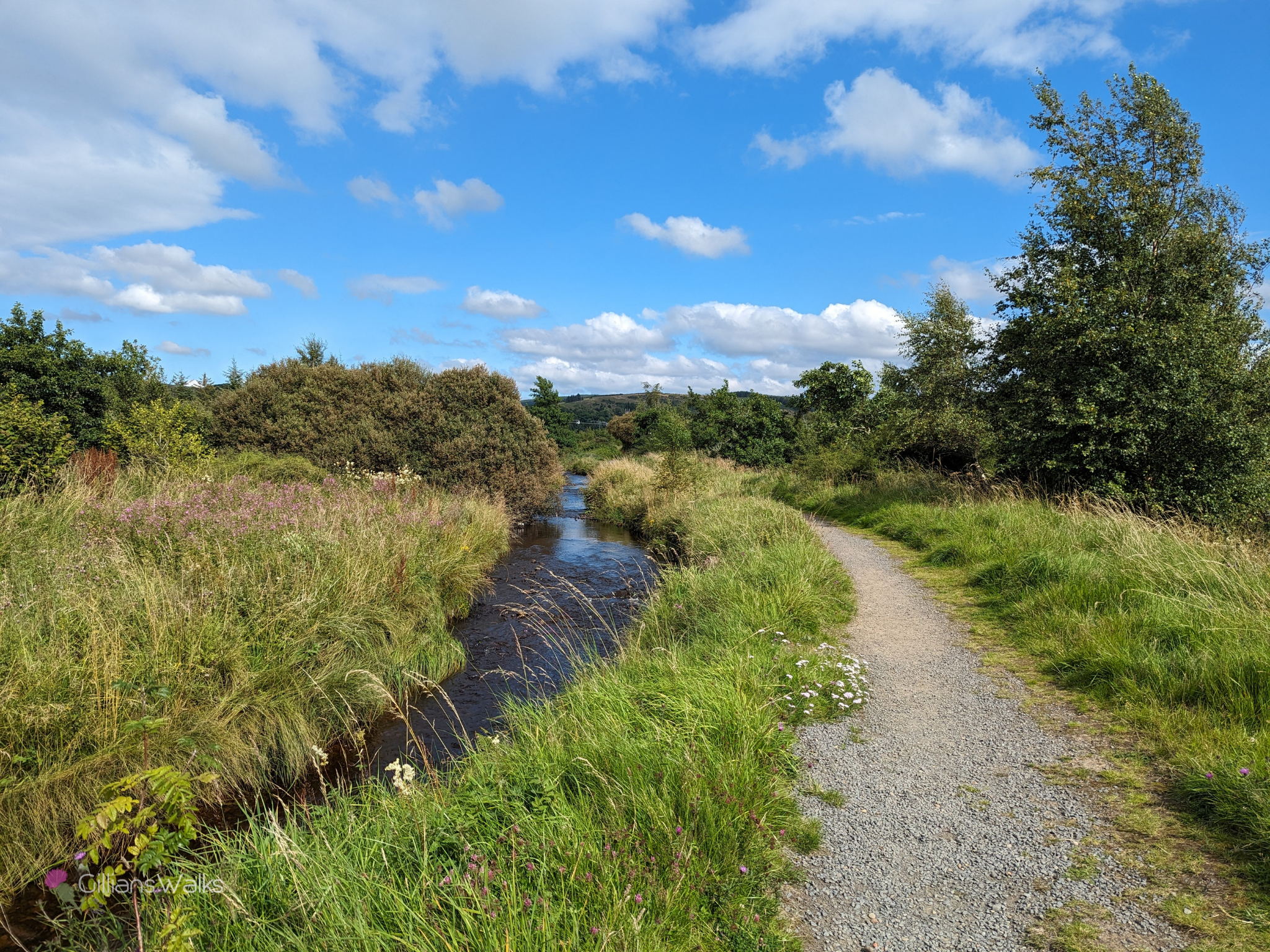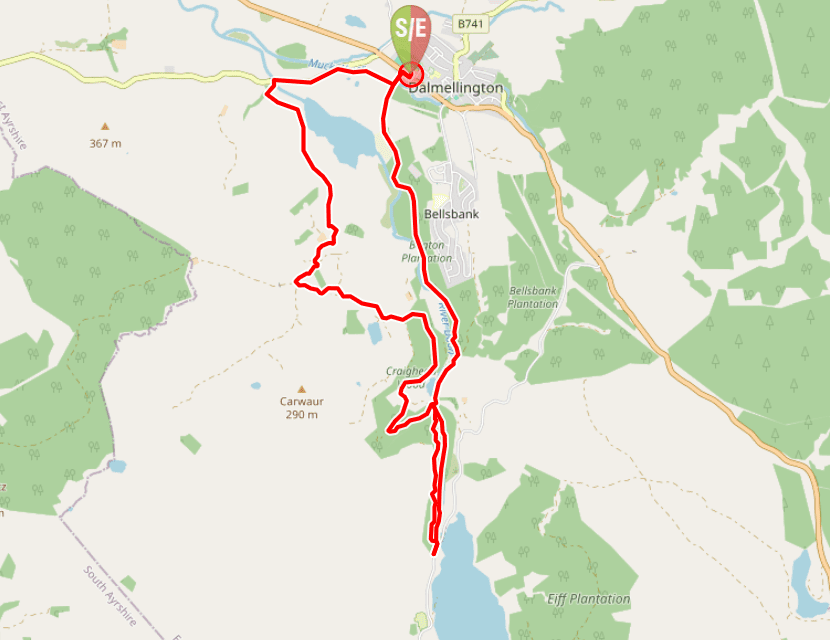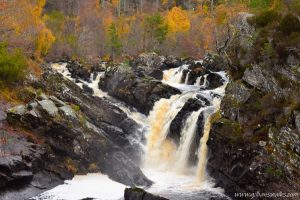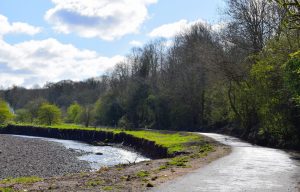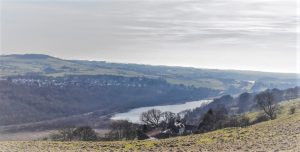NOTE: The Roundhouse Cafe at Loch Doon is currently closed. The owner of 23 years retired in October 2023 and it is understood that the business is being put up for sale.
TERRAIN: surfaced roads, gravel tracks, woodland trails, boardwalk, fields. The path in Ness Glen is narrow, uneven and very close to the river which has caused some erosion and means that it is prone to flooding at times. Expect boggy conditions after rain. One stile, several kissing gates. A few steep hills and some steps.
LIVESTOCK: Sheep, cows and horses can often be found along this route and the paths run through their fields so you will be in amongst them. You may also encounter horse riders along parts of the route. Please be a responsible walker.
![]() GETTING THERE: Car parking available at Dalmellington Community Centre. Local buses stop opposite the fire station in Dalmellington, which is a 5 minute walk from the start of the route.
GETTING THERE: Car parking available at Dalmellington Community Centre. Local buses stop opposite the fire station in Dalmellington, which is a 5 minute walk from the start of the route.
View full route description
Leave the car park at Dalmellington Community Centre via the main entrance, turn right along A713/Ayr Road then cross over to take the first left into the Craigengillan Estate. Stay on the main surfaced road through the Estate, passing Bogton Loch on your right and then meeting up with the River Doon. Approximately 1.5 miles along the road you’ll come to a fork where you go left, coming off the road onto a woodland footpath (turning right will take you to a bridge over the river and know you’ve gone wrong). After approx 500m the footpath splits in two – keep right. After a few zig zags you will reach another fork with a bridge to your right: keep left to continue on the path a bit further. At the end of the path turn right to go downhill towards a small ford (don’t worry there’s a bridge across it, but you won’t see it until you’re at the bottom of the hill!). Go through the gate then turn left to follow the River Doon upstream for around 500m. There are fields on your left which often have sheep grazing. Go through the next gate then turn right to go through another gate and across a footbridge.
At the other side of the bridge is the entrance to Ness Glen on your left. Enter the Glen and follow a narrow footpath beside the river for approx 3/4 of a mile – enjoy, it’s spectacular! At the southern end of Ness Glen you’ll arrive by the dam wall. Continue along the path to a gate (or take the steps) which leads out onto a single track road at Loch Doon, beside the Roundhouse Cafe. This is you at the farthest point from the start of the walk. Enjoy the scenery then retrace your steps back into Ness Glen, but look for a fork in the path near the dam wall, turning left to go uphill away from the river. The path climbs, crossing a bridge and some boardwalk, through a tranquil woodland high above the river rapids. When you arrive at a viewpoint, keep right to go downhill. You’ll emerge at a suspension bridge close to where you entered Ness Glen earlier. Don’t cross! Continue past the bridge and out to the Glen entrance.
Turn left onto a wide gravel track (the footbridge you crossed earlier will be on your right). The track goes gently uphill and after approx 500m you’ll be at a crossroads. Turn right to cross a bridge (signposted “Find Me Out” and “Forget Me Not” – two of the holiday rental properties in the Estate). This track leads you up past Craigengillan Stables and some other impressive buildings. At a crossroads beside these buildings, turn right and enjoy this easy walk along a surfaced road, noting the views across the Estate on your right.
After a little more than half a mile, you’ll reach another crossroads: turn left to come off the road and onto a gravel track which leads uphill to a field. Go through the gate and turn left, following a track up the edge of the field. Note the views down into Bellsbank on your right a you climb! Near the top of the hill the track splits: keep right to continue gently uphill on an obvious track along the edge of the field. There are often sheep and horses in this field. At the gate, go over the stile then near the top of the hill keep right at the fork. This pleasant track crosses open grasslands high up on the hillside. Take a look over your left shoulder to see Wee Berbeth Loch, a peaceful fishing spot. On reaching a gate go through it and follow the track along past some stone ruins. The view opens up here, revealing Bogton Loch and the surrounding countryside. Go through a gate and continue on the track, which winds gently down the hillside to another gate leading to a single track gravel road. Turn right and walk down the road. After approx 300m the road bends sharply to the left and you will cross a bridge. Immediately after crossing, look for a small footpath/set of steps on the right (there is usually a handwritten wooden sign with “FALLS” on it). Go down the steps, taking care because there is steep drop to your right.
Here is where you’ll find Dalcairney Falls tumbling over the rocks into a pool of water below. Stay on this trail, veering left at the bottom of the hill. You’ll soon arrive at a large wooden footbridge. Cross over then follow the trail along the edge of the Dalcairnie Burn to another bridge. This one leads you to the edge of a field, which often has Highland Cows in it. In my experience they have always been quite docile. You want to head pretty much straight across the field, to a fence at the other side. You can’t see it at first but there is a gate on the fence. Go through the gate into the next field. To start with continue straight ahead again- you’ll have a fenceline with a gate on your right-hand side. When you are in line with the gate turn left to pick up a track leading to another gate.
You are now out of the field and on a single track road – turn right to walk along the road. After approx 1 mile, look out for a gate on your right, go through the gate and across a small marshy area towards a building (looks like a garage or warehouse). Go around the left side of the building and you’ll arrive at a wooden footbridge over the River Doon. Cross the bridge then turn immediately left to follow the river downstream briefly and onto the B741. Turn right to walk along this road to the point where it crosses the Muck Water. Turn right here to go through a gate and onto a footpath, signposted “Welcome to Scout Garden”. This pleasant trail follows the course of the Muck Water along to a gate which takes you onto a minor road. Turn left here to leave Craigengillan Estate the way you came in earlier in the day! At the main road cross over and turn right to return to Dalmellington Community Centre.
WALK REPORT – Dec 2018, Jan 2021 and Aug 2023
Every time I’ve walked this route I’ve been left with a sense of awe at the beauty of this rural part of East Ayrshire. The Doon Valley is home to so many gems, and this route really delivers with two of them rolled into one walk: Ness Glen and Dalcairney Falls. I really must stop going back and doing the same route all the time, because there are many, many more walks for me to try in the area!
Equally as nice on a snowy January morning as it was on a rainy August afternoon. I think I’ve yet to discover it on a warm sunny day! Some summer vs winter photos below in case you need convinced! Swipe across to see the transformation:


It seems to be home to some interesting place names: Bogton Loch, Muck Water….. don’t sound very appealing do they?! Don’t let the names fool you! And Loch Doon…. have you ever heard the joke about it being the place to go during “lockdoon”?….
Ness Glen is a place of true beauty and taking a walk there is always an awe-inspiring experience. I have taken so many photos here in different seasons and it never fails to impress. When I led a group through the gorge in the summer of 2023 it was a dreich, wet day but that didn’t matter once inside this little piece of paradise. Ness Glen is part of the Craigengillan Estate and it is thought that the riverside path was originally created in Victorian times by one of the McAdam family. I can’t help but imagine the ladies strolling through the glen in long dresses and summer bonnets! Maybe it wasn’t as muddy back then!
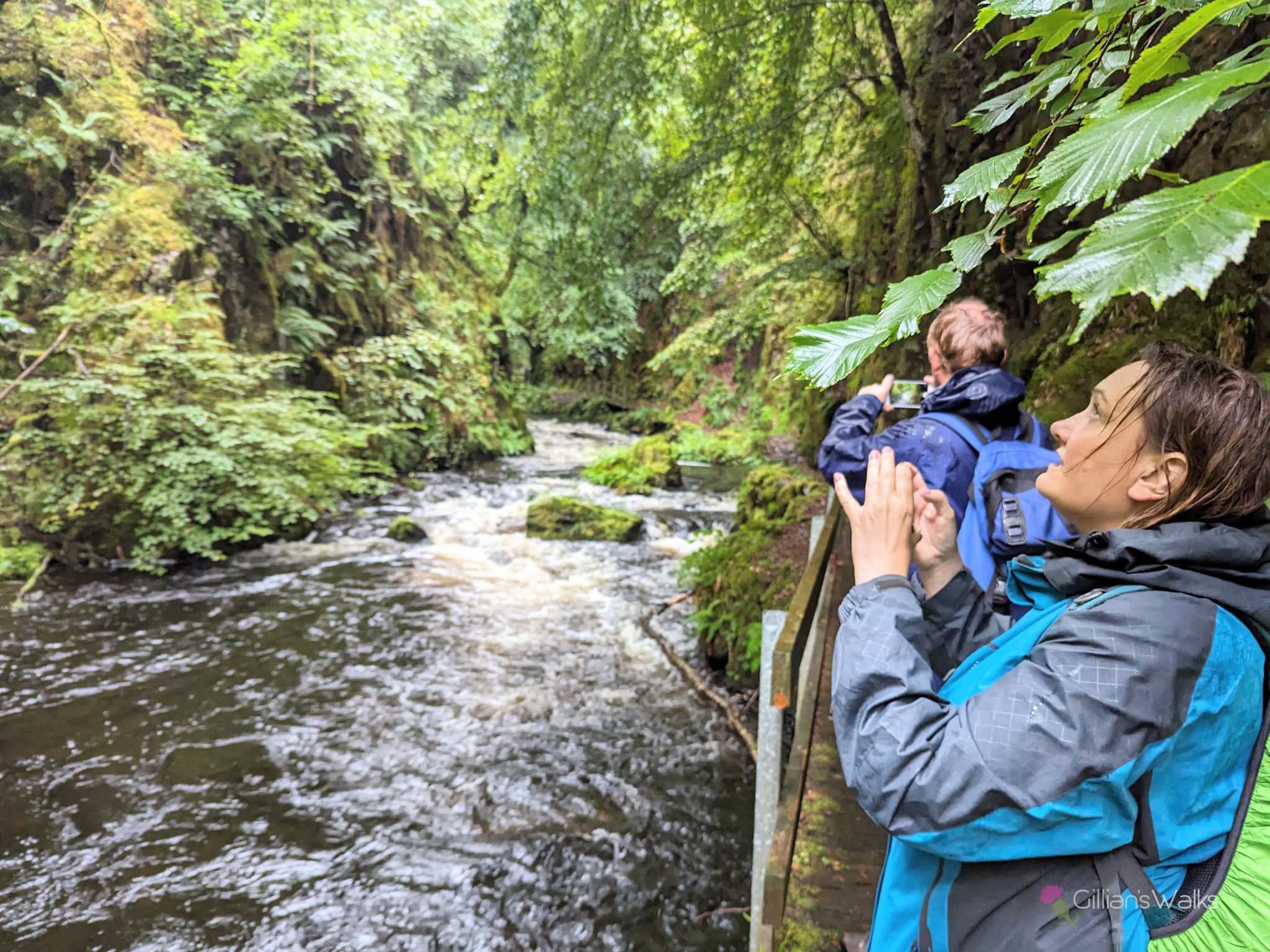

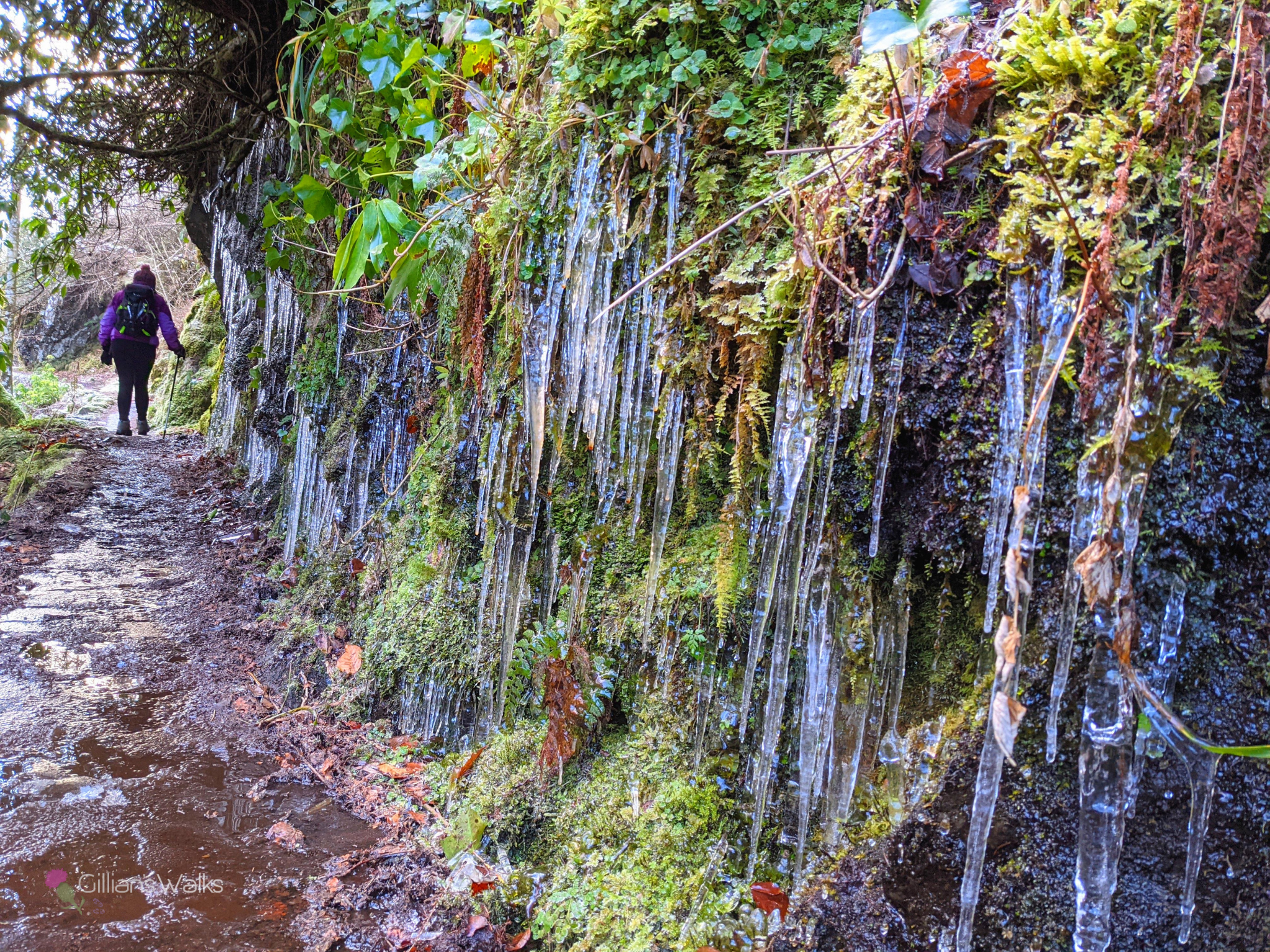
A treat on this walk was always to arrive at Loch Doon, the furthest point on the walk from the start point, and enjoy some home baking or a scrambled egg and tattie scone roll from the Roundhouse Cafe: the best scrambled egg and tattie scone roll I’d ever tasted no less! Happy for customers to use their loo, the cafe was also situated at a convenient point of the walk! One day I arrived with my mum and it was unexpectedly closed – devastated is an understatement! I had even checked online for their opening times and everything. Just our luck that they had changed their opening times with the new hours starting that very day… I’m sad to say that at the time of writing the cafe is up for sale and closed until a new owner comes along. The previous owner has retired after 23 years loyal service.
Some more summer vs winter photos, this time of Loch Doon. Swipe to see the transformation:


In the 13th century there was a castle – Balloch Castle – which sat on an island on the loch. When the dam was being built in the 1930s, the castle (by then a ruin) was moved to the loch shore to avoid the rising water level. You can still visit the ruins today, by walking/driving further along the loch edge.
The area around Loch Doon was used for training pilots and air crew in aerial gunnery during WWI. Then during WWII there were two known crashes near the loch – one piloted by a McTavish from Canada who is buried at Ayr Cemetery. The remains of the aircraft are still at the crash site in the forest next to Loch Doon. The other crash was a Spitfire and its Czech pilot – the wreckage wasn’t found in the loch until 1982. It was taken to the Dumfries & Galloway Aviation Museum where it was restored and has been on display since 2017.
The loch is now recognised as a SSSI because it supports the only native population of Arctic char in the south west of Scotland.
The Craigengillan Estate was established in 1611. It was the seat of the McAdam family for 400 years, including the great engineer John Loudon McAdam, inventor of tarmac. The McAdams were enthusiastic horse breeders and this is a theme which is still evident in the Estate today with very active stables, and even holiday accommodation which can be booked along with your horse! You will often see horse riders out on hacks around the Estate’s many tracks and trails, or at the very least see horses in the fields surrounding the stables.
Fun fact: the interior of Craigengillan House was redecorated by the same company who did parts of Buckingham Palace and the White House!
The current owner, Laird Mark Gibson, received an OBE in 2019 in recognition of his services to heritage through work done in the Estate. Prior to him buying the Estate in 1999, “Keep Out” signage and barbed wire could be found at all the entrances and the Estate was in a state of neglect with frequent fires set in acts of vandalism by local youths. The Laird has opened up access to the Estate for the public, working alongside the community and local schools to encourage them to get involved in conservation tasks there. 25 years on and it seems he has managed to turn things around: the Craigengillan Estate is certainly a huge asset to the area and wandering around it today it is hard to think of it closed off and neglected.



One of the great things about this walk is the variety of terrain you encounter: as you begin to tire of one thing, it all changes. An example of this for me is coming off the main road through the Estate and out across the farmed grasslands, passing Wee Berbeth Loch and its stone ruins and up to the viewpoint over Bogton Loch. All of a sudden you are amongst sheep and horses and out in the open, high up in what feels like quite an exposed area (I’ve been there in driving rain and it definitely felt exposed!), crossing stiles and going through hundreds* of gates and walking along a track lined with ancient Beech trees.
*not actually hundreds but a fair few!
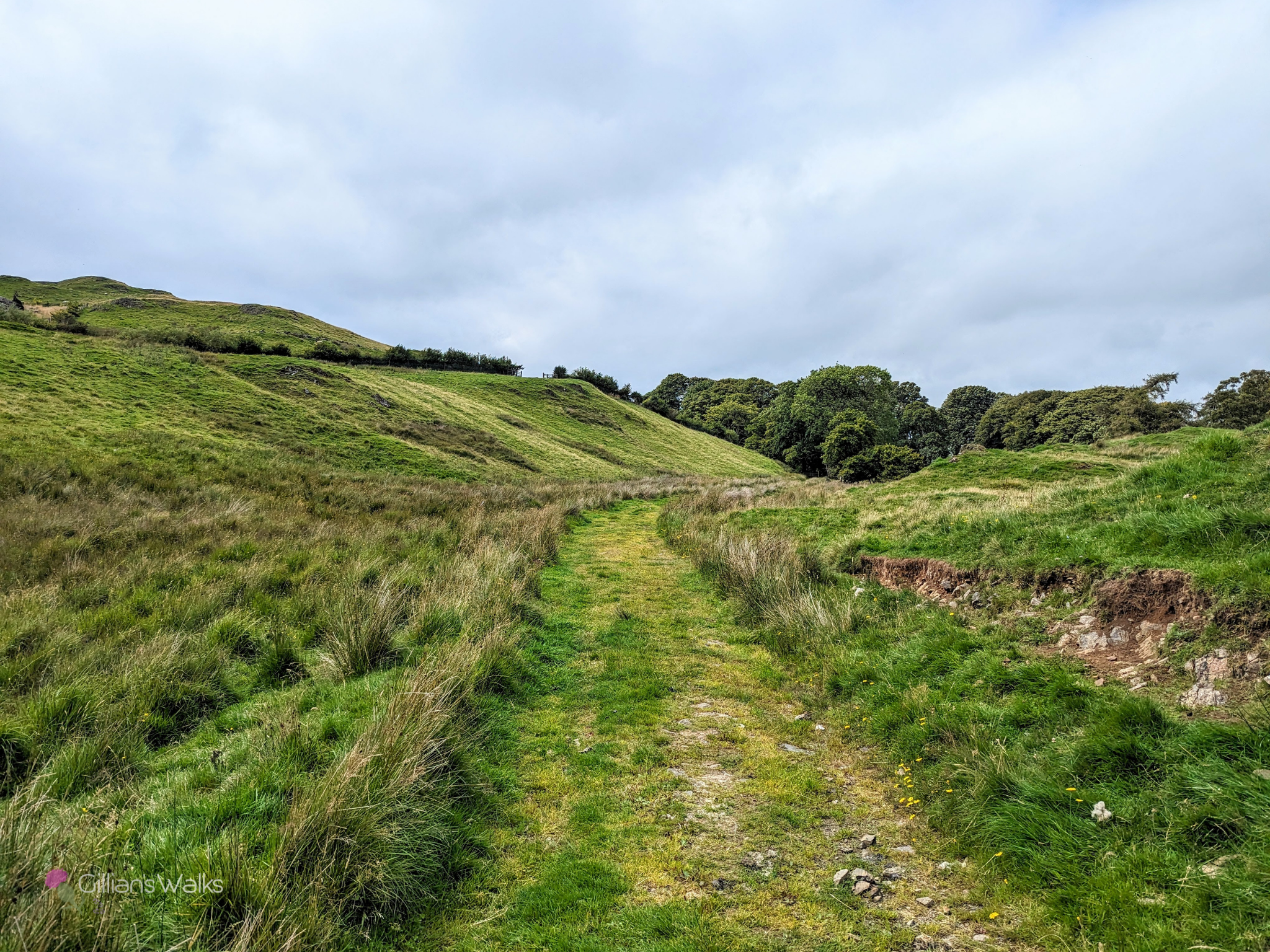
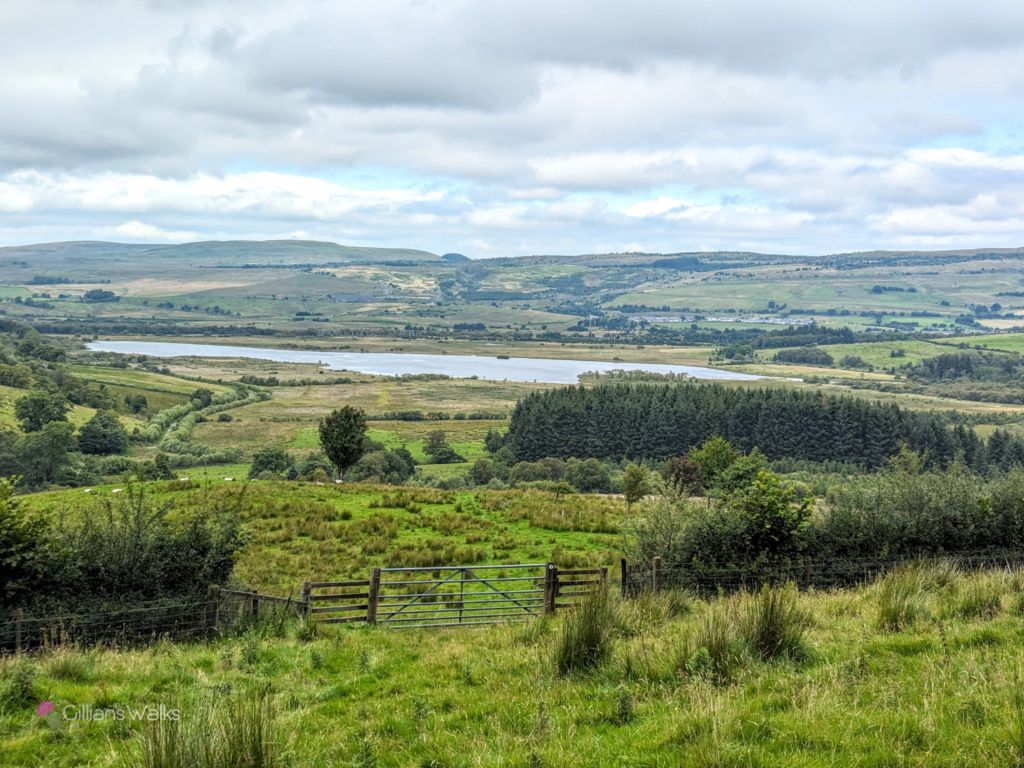
By the time you reach Dalcairney Falls you are really quite far into the walk and it has been so good that you can almost be forgiven for forgetting there is still a waterfall to come! But come it does, and well…. A photo speaks a thousand words….
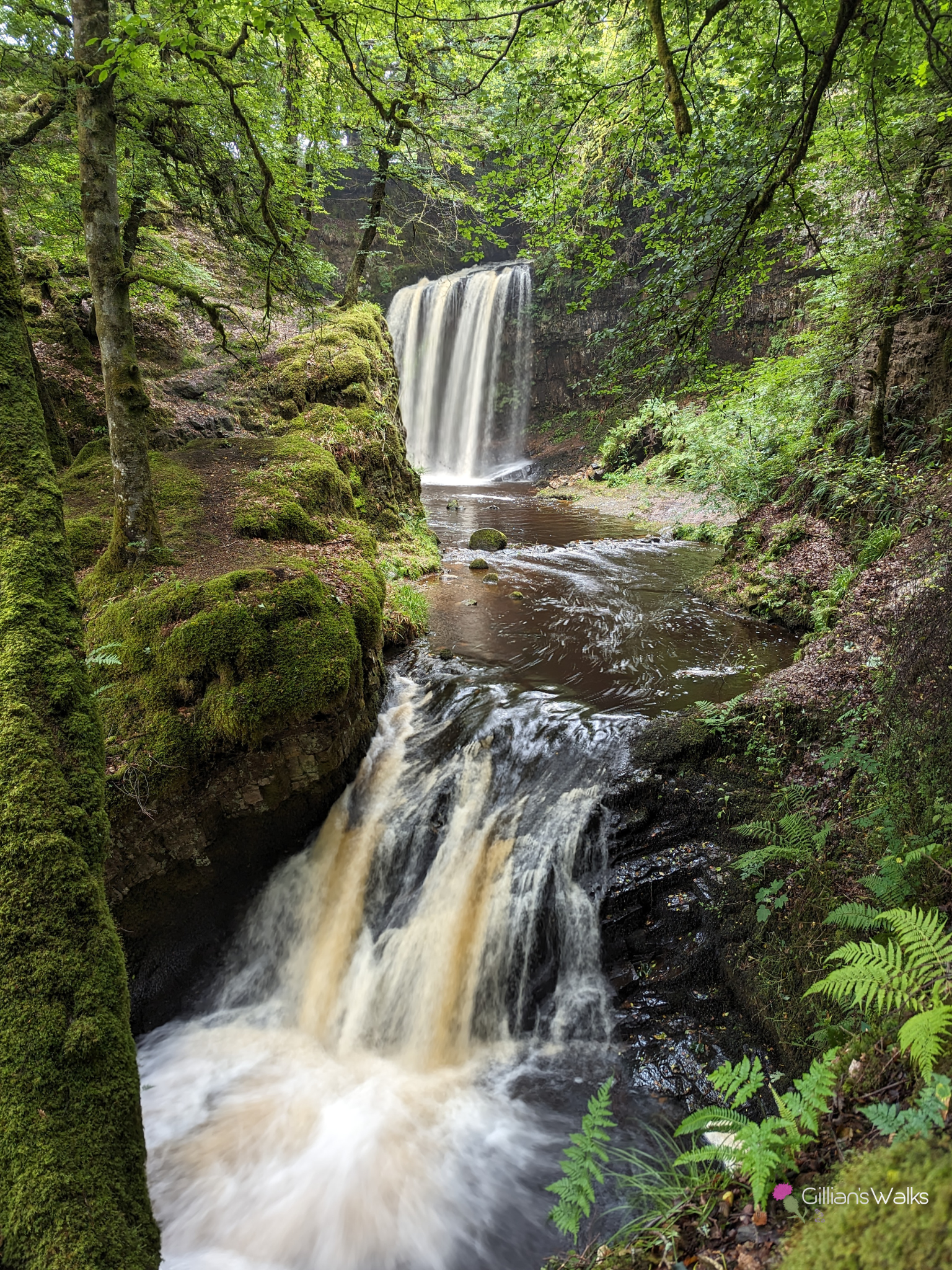
The first time I was here I took my photos and went back up onto the road, finishing the walk that way. I had seen a footpath of sorts continuing on downstream but it looked boggy and not particularly well used so I didn’t think much of it. Returning another time, I followed it and was surprised to find two very well constructed wooden footbridges amongst the overgrown wild flowers!
The path led me to a field where I paused before going in because there was a family of Highland Cows grazing away. Uh oh…. will I need to go back? My map showed a path going across the field and out onto the road – there was no path in real life. If I’d been alone I’d probably have chickened out but mum’s presence gave me a feeling of safety (not that she could have done much!) and we decided to venture into the field, keep quiet, quickly make our way across and hope for the best.
I instinctively held my breath until I reached the gate at the other side, heart pounding away in my chest. We needn’t have worried: not one of the cows even so much as lifted its head to look at us as we walked past right in front of their noses!
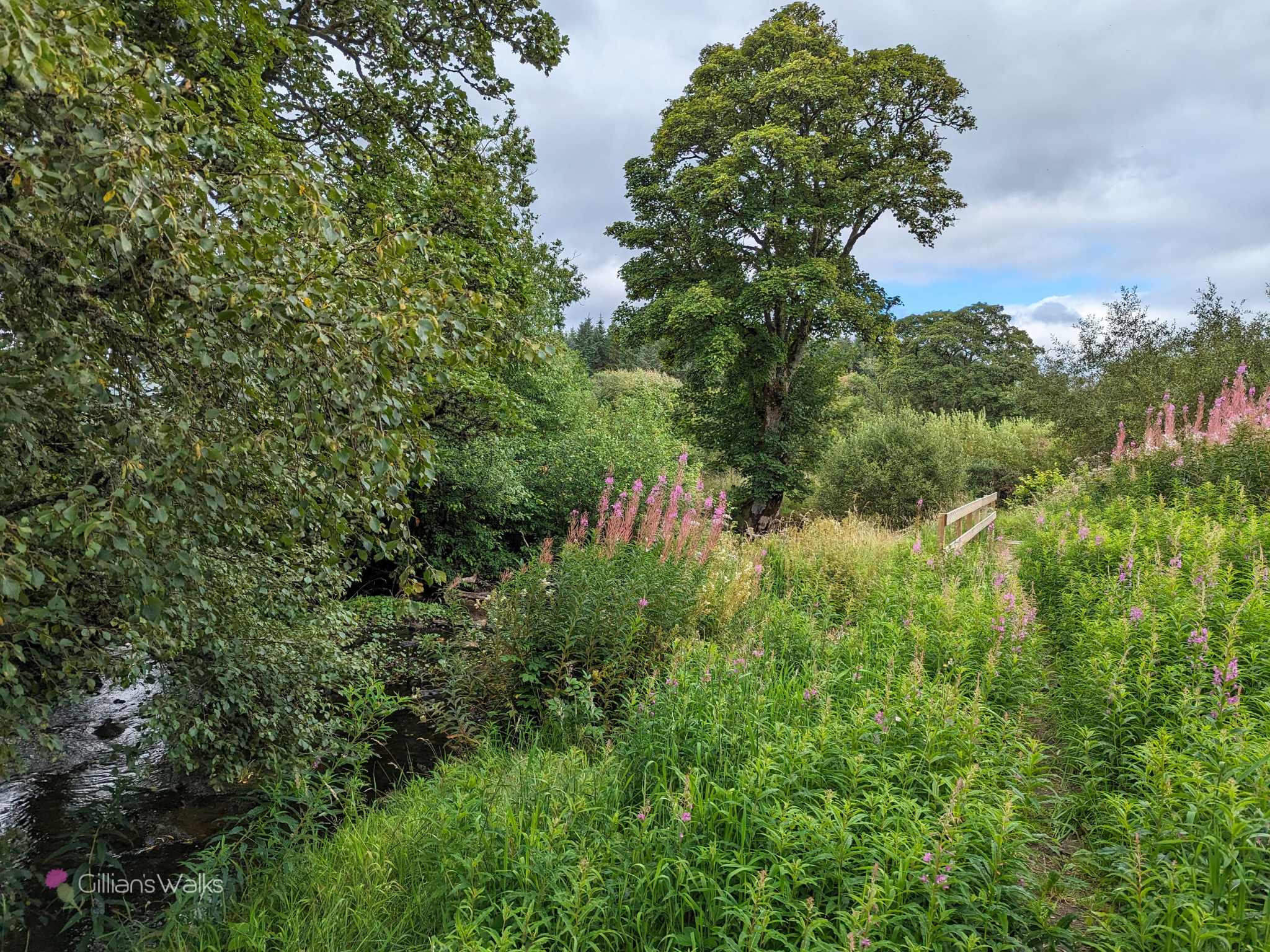
Then to finish the walk off nicely, after a stint on surfaced roads we found another little gem of a footpath along the Muck Water. Muck by name, not by nature: this is looked after by a local Scout group and about halfway along there is a landscaped garden area with seating. A beautiful spot and a fitting end to a fantastic route!
